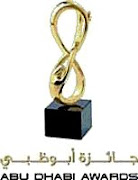60 year - Two unlikely heroes: the Election Commission and the judiciary
N. RAVI
Ironically, in order to protect the Constitution, both have assumed powers that extend beyond their original mandate
High expectations tinged with warnings against abuse, and advice on responsibilities of the people in a free country, marked the coming into being of the Constitution of India. Though the Constitution itself was adopted two years and five months after Independence, the work on its drafting began much earlier, with the Constituent Assembly holding its first meeting on December 9, 1946. Moving the Constitution for adoption as Chairman of the drafting committee, Dr. Ambedkar noted, “however good a Constitution may be, it is sure to turn out bad because those who are called to work it happen to be a bad lot.” To safeguard freedom, the people and political parties should follow constitutional methods, avoid hero worship and ceding power to any single person however great, and work for social and economic democracy in addition to political democracy, he said. The President of the Constituent Assembly, Dr. Rajendra Prasad, in his speech before putting the draft Constitution to vote for adoption on November 26, 1949, stressed the importance of character, noting that “India needs today nothing more than a set of honest men who will have the interest of the country before them.”
While the Constitution was welcomed with general acclaim, it was not without its critics. The noted British authority on constitutional law, Sir Ivor Jennings, termed it too prolix, too long and too rigid and thought it was unwise to have added the complications of a bill of rights to the complications of a federal structure. As it turned out, the perceived rigidity did not stop the Constitution from being amended 94 times in 57 years, while the fundamental rights and the federal structure, for all their shortcomings, are among the more enduring and admired features that have served the nation well. Dr. Ambedkar and Dr. Rajendra Prasad seem to have been more prescient when they voiced concerns over the danger to political democracy from the manner of functioning of elected representatives and political parties.
Only once in the 57 years of constitutional history did political democracy come close to being extinguished — during the Emergency of 1975-77. The country did come out of the danger and the lessons from the period are too deeply ingrained in the constitutional system now for a repeat of that infamous phase. Yet, many lesser distortions have indeed crept into the working of the Constitution, and in firming up the democratic structure the Election Commission and the judiciary have emerged as the two unlikely heroes. Unlikely, because looking back, while they were envisaged as important organs of the state, their pivotal role in making democracy work was not quite anticipated. Ironically, to protect the Constitution both the bodies have had to resort to constitutional vigilantism of sorts in extending their powers beyond the original mandate.
Gladiatorial combat
Over time, elections that started out as gentlemanly contests took on the character of a no-holds-barred gladiatorial combat, the attractions of office having made contestants desperate, and overwhelmed normal restraints and decent political conduct. The popular will as expressed through the ballot box was sought to be distorted by means ranging from physical capture of booths and rigging, enrolment of phantom voters, intimidation, bribing of voters and extravagant campaign spending to subtler appeals based on religion and caste and the use of the power and the machinery of office.
The one event that was to change all this was the appointment, at Rajiv Gandhi’s suggestion, of T.N. Seshan as Chief Election Commissioner in December 1990. While the CECs before him had functioned as passive vote counters, Mr. Seshan was determined to cleanse the electoral system of all its evils, and in the process did not hesitate to take on both the political establishment and the administration. At times he did overreach, as when he sought to discipline officials under the State or Central administration and claimed overriding authority over fellow Election Commissioners. Yet, his zeal in ensuring that the voter rolls were in order, that the polling went according to the rule book, that the candidates did not spend beyond limits and persons in office did not misuse their authority to gain an undue advantage, was exactly what was needed to shake up the moribund electoral system.
From then on there has been no looking back, and his successors have made sure that the process that he set in motion has been continued and fine-tuned. Article 324 vests in the Commission the “superintendence, direction and control” of elections, and it has been greatly aided in its task by the Supreme Court’s interpretation of this article as a reservoir of power that would enable it to fill the gaps in the law to ensure fair elections. Thus the Commission has been able to bring in a Model Code of Conduct for Ministers and other candidates that is now seen as binding, to order the transfer of partisan officials, require candidates to disclose details of their educational qualifications, property and criminal record, ask political parties and candidates to submit audited accounts, and set detailed norms for electioneering. Electronic voting machines and computerised rolls have enhanced the efficiency and integrity of the electoral process.
The Election Commission has not been without its flaws. In the first place, the system of elections it has devised is extremely manpower intensive, calling for a massive deployment of security forces and of other officials. Because the same forces have to be moved around, the electoral process has become unduly long drawn — indeed a single-day election across the country or even in a large State seems unlikely in the near future. Second, in seeking to bring politicians in office and outside in line, it has had to confront them in ways that have only contributed to the demonising of politicians and political parties en masse.
Criminals in legislatures
One serious problem that is yet to be addressed satisfactorily is how to prevent criminals from entering legislatures. When persons charged with serious offences such as murder and dacoity contest and win from their prison cells or when others convicted of crime continue to remain undisturbed as members of the legislature pending appeal, large sections start to question the legitimacy of the political process itself. This is an issue that does not admit of an easy solution.
On the one hand there is the presumption of innocence of any person charged with a crime before his conviction, and on the other there is the ever present danger of cases being foisted on political opponents, given the control that politicians in office exercise over the police force and prosecution. Indeed, until the task of prosecution is placed beyond the influence of the political executive and the criminal justice system starts delivering speedier justice, the presence of suspects and criminals in legislatures will remain a nagging issue.
The second, and perhaps even bigger, hero has been the judiciary. Right from the beginning, it has served as a defender of the fundamental rights against arbitrary executive action. In the early period until the mid-1970s the executive seemed to engage in a continuous struggle with the judiciary, and during the Emergency launched a strong attack on the courts as standing in the way of the government’s economic and social programmes. Annoyed at the slightest display of independence, the government mounted pressure through the supersession of senior judges and demanding that judges be committed to the philosophy of the government. In what were surely its darkest moments, the Supreme Court caved in and even ruled that no remedy would be available against loss of life and liberty during the Emergency when fundamental rights were suspended. Yet the judiciary recovered quickly enough, and indeed the pressure and the threat of court- packing only served to highlight the dangers to its independence, prompting it to assert itself and enlarge its role in ways that were not quite envisaged in the Constitution.
Realising that the unrestricted power of appointments and transfers in the hands of the Government of India would continue to pose a threat to judicial independence, the Supreme Court moved to assume the decisive role in the appointment of judges. Article 124 provides that judges of the Supreme Court “shall be appointed by the President by warrant under his hand and seal after consultation with such of the Judges of the Supreme Court and of the High Courts in the States as the President may deem necessary for the purpose.” In a series of three cases, the Supreme Court ruled firmly that the opinion of the Chief Justice was binding on the President. The Chief Justice himself would be part of a collegium of five (for appointments of Supreme Court judges) or three (for judges in High Courts) of the seniormost judges of the Supreme Court and he would have to go by its views. It was emphatic that “no appointment can be made by the President under these provisions to the Supreme Court and the High Courts, unless it is in conformity with the final opinion of the Chief Justice of India, formed in the manner indicated.”
If this was self-aggrandisement, it seemed understandable in the context of the earlier attempt of the government blatantly to play favourites with judges. Yet the procedure that the Supreme Court has now put in place is far removed from the constitutional provisions, and the judiciary has become virtually self-appointing and self-perpetuating.
Secure now from interference, the judiciary became more assertive, and its assertiveness has been largely for the good. Even earlier, it had reached out to such sections as bonded labour, child workers, undertrial prisoners and harassed women who were suffering neglect in the public policy arena. In the later period, its role in protecting the system against abuse of power and corruption came to the fore. It sought to ensure that the rule of law prevailed under all circumstances and that political office could not shield the guilty from criminal charges—in the Jain hawala case, for instance. Again, it has acted as a check against the abuse of political power both in the distribution of patronage (in its rulings on the petroleum dealerships scam) and in dismissing elected governments in the landmark Bommai case. More controversial has been its attempt to remedy governmental inaction in fields such as pollution control and traffic management when its actions have tended to intrude into policy areas in which the setting of priorities and the allocation of resources are properly the domain of the executive and the legislature.
Quite apart from such overreach, some of the judgments have not exactly been models of clarity or consistency, and have spawned endless litigation — as on the question of reservations in college admissions. The judiciary from the High Courts down remains a grossly under-funded body and the problem of delays and the huge pendency of cases in courts at all levels has only worsened over the years. Yet for all its flaws, the judiciary has been a great source of democratic strength, curbing abuse of power and corruption and safeguarding the rights of the people.
N. Ravi is the Editor of The Hindu.

Search
Subscribe to:
Post Comments (Atom)
























No comments:
Post a Comment